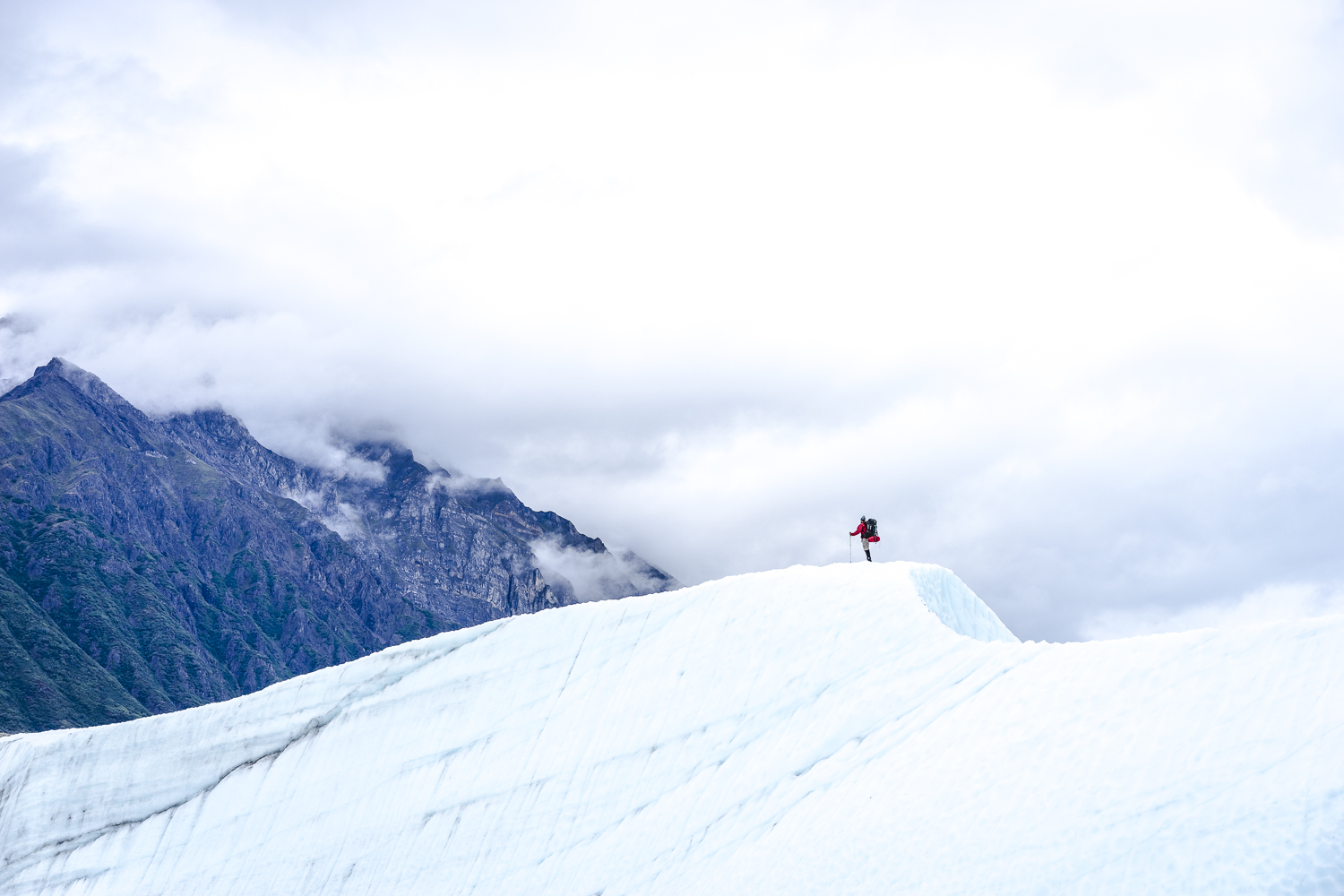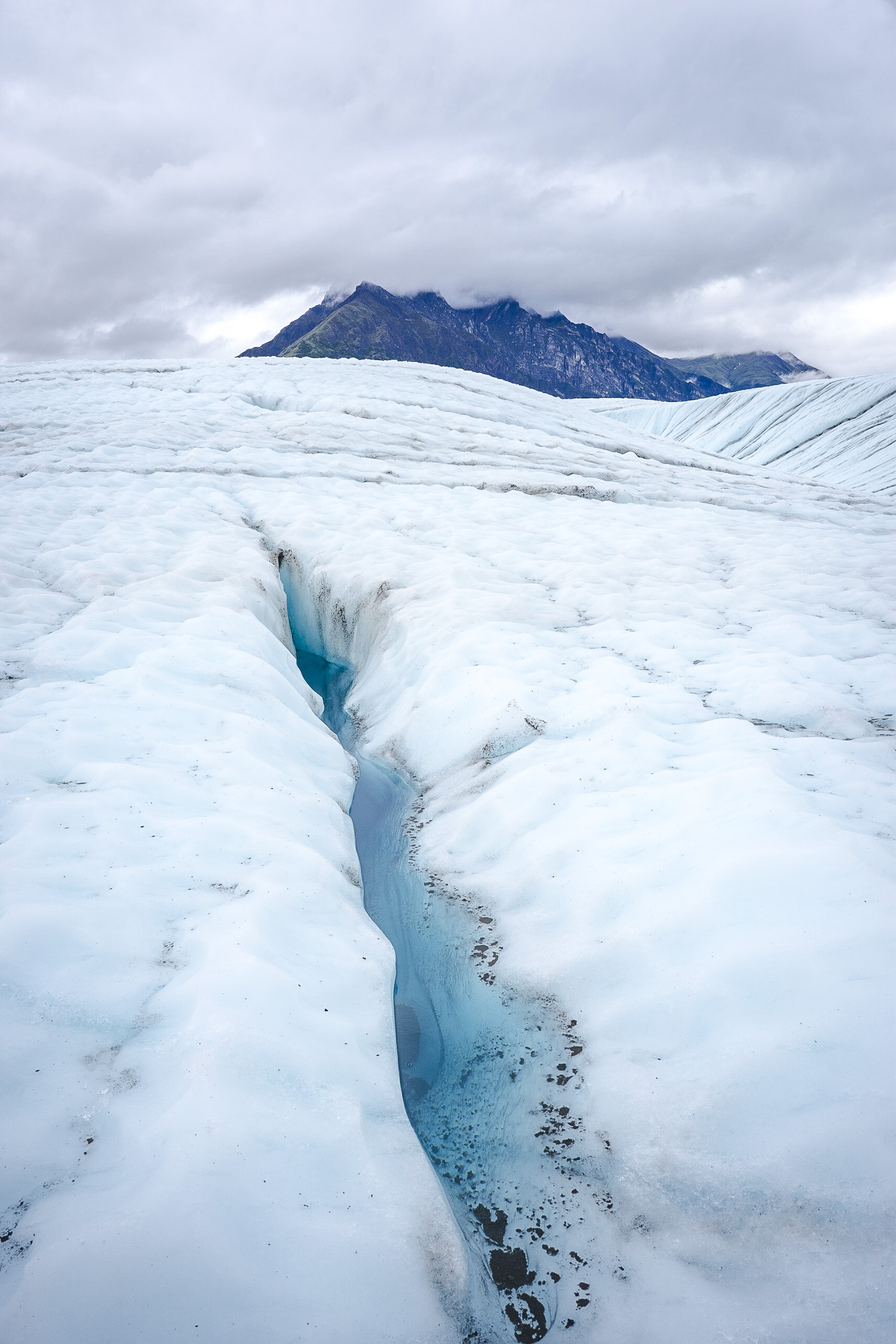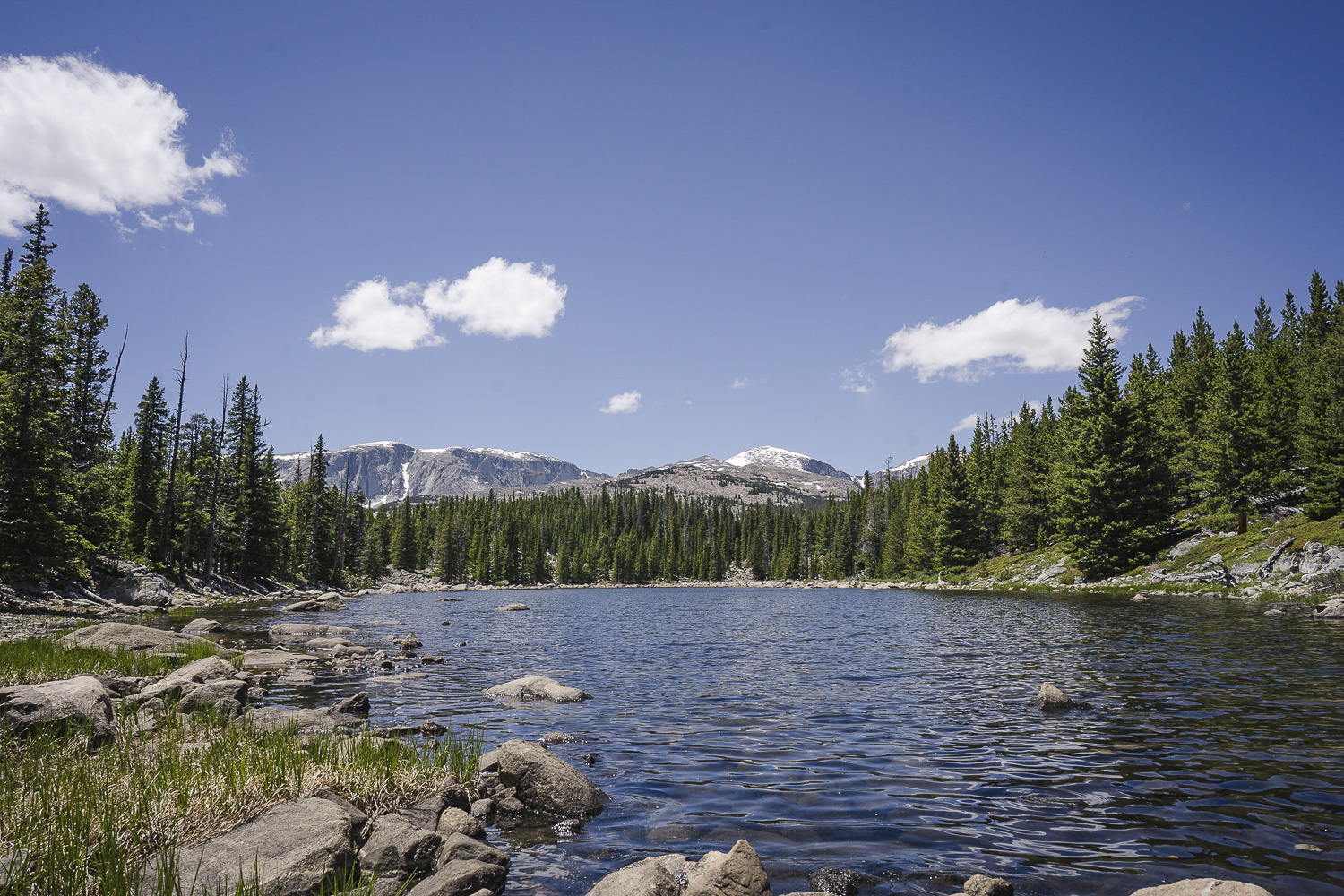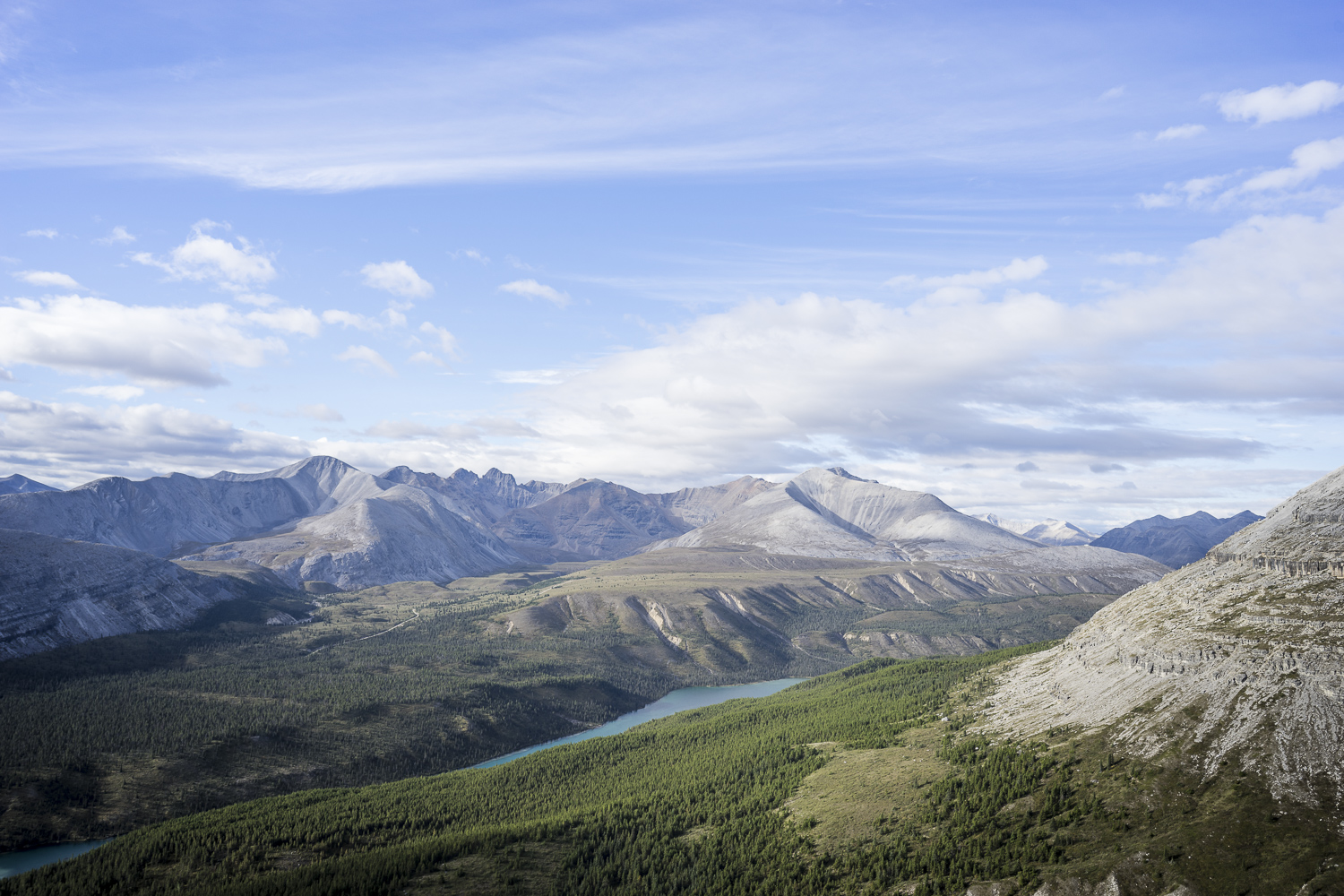Alaska- Wrangell St. Elias National Park

We arrived in Alaska as most road travelers do on the Alaska Highway, which deposits you at a nexus in Tok, Alaska. From there one can either take the high road to Fairbanks or the low road toward Valdez and the Kenai Peninsula; we had already decided that the low road was where we would start our Alaskan journey. While scouring the maps and Milepost for campsites and things to do, a side trip down the Nabesna Road jumped out us for both scenery, free camping and possible hiking. Oh but wait, that’s in Wrangell St Elias National Park and having a dog usually means most of the trails are off limits. Not wanting to give up so easily we did a little research only to reveal that dogs are welcome anywhere in Wrangell.
We began by exploring one of Wrangell’s two unpaved roads the Nabesna Road, complete with all the potholes you can take and about five stream fords thrown in to keep you on your toes and weed out the faint of heart. The Nabesna Road runs 46 miles from the town of Slana, AK to the little airstrip at Nabesna, a solid two hour drive, during which on a clear day the Wrangells will be visible to the right and the Mentasta Mountains to the left. We drove the entire length of the road that day and settled in at the free Kendesnii Campground, which was conveniently located next to the Sportsman's Paradise. The Sportsman’s, a locally run bar has been in business since before the Park was in existence; needless to say there was some history to be learned in a place like this. That evening we met and talked with the folks that live in this part of the country, got some good advice on what to see in Alaska and the Sportsman's owner even shared his photos of when he operated a hunting and fishing lodge. The next day we departed for the Kenai Peninsula knowing that this would only be the beginning of our time in Wrangell.
Nebesna Road and Mentasta Mountains Wrangell St. Elias National Park Alaska
Koda made friends with a Nebesna Road local
Over the course of the next week we continued to plan our return trip to Wrangell. Plans that included staying in one of the parks free public use cabins, backpacking across the Root Glacier and even trying to set up a fly-in backpacking trip to one of the parks more remote locations. This was a rather ambitious but doable schedule; unfortunately weather would end up having a substantial impact on our best laid plans. After some time on the Kenai we headed back to Wrangell to put our plans in motion. This time we tackled the second of Wrangell’s two roads, not unlike the Nabesna Road the McCarthy Road is sixty-five miles of a rough, potholed dirt road to the town of McCarthy. We arrived in McCarthy on what would turn out to be the sunniest day for probably the next two weeks. We set up camp at what is known as Base Camp right on the banks of the Kennicott River with the Root Glacier and Stairway Icefall as the backdrop. The next day we set off to backpack across the Root Glacier and camp at the Donahoe Lakes. The weather however had different plans. Crossing the eastern stem of the Root is fairly straightforward and not particularly difficult; the challenge begins once you cross the medial moraine and attempt to exit the glacier on the western side. Our attempts to exit the glacier coincided with mother nature apparently having a really bad day, so after circling what we thought was the exit for an hour in a driving rain we finally conceded that we had to turn back. Back on the other side we set up camp and waited out the rain, the next morning we were greeted with blue skies so we headed back out onto the ice for some exploring. The blue skies however, would hold for only a few hours and give way to more rain. At this point the wheels began to come off of our perfectly planned schedule and we put our Wrangell Plateau backpacking plans on hold pending weather improvements.
Base Camp McCarthy Alaska
Stairway Icefall Root Glacier Wrangell St. Elias National Park Alaska
Root Glacier Wrangell St. Elias National Park Alaska
Root Glacier Wrangell St. Elias National Park Alaska
Root Glacier Wrangell St. Elias National Park Alaska
Root Glacier Wrangell St. Elias National Park Alaska
Rainy crossing on the Root Glacier Wrangell St. Elias National Park Alaska
Fresh glacier water
Root Glacier Wrangell St. Elias National Park Alaska
Root Glacier Wrangell St. Elias National Park Alaska
Eventually we found the best way to beat the weather in Wrangell was in one of their free public use cabins called the Viking Lodge. Located about twenty miles back the Nabesna Road followed by a 3/4 mile hike sits the Viking Lodge; a remanent of the Homestead Act and a testament to the areas rugged past. The cabin was hand built by a trapper back in the seventies and is now one of many free public use cabins in Wrangell. We spent three very enjoyable nights in the cabin, it was a great chance to relax after almost three months on the road and an opportunity to watch the rain from the inside. We spent our days picking wild blueberries, reading and hiking some of the local trails, which included a hike to another cabin called Caribou Lodge. At the end of our three days we bid the little cabin farewell and made one of the hardest decisions of the trip and that was to give up on our backcountry travel plans due to no improvement in the weather for the foreseeable future. So for a place we had never intended on visiting, two out three isn’t half bad and we’re already planning our next trip to Wrangell to finish what we started.
Viking Lodge Wrangell St. Elias National Park Alaska
Caribou Cabin Wrangell St. Elias National Park Alaska
Info:
Resources/Maps: Falcon Guides Hiking Alaska’s Wrangell National Park and Preserve, National Geographic Wrangell St Elias map
Entrance Fees: None for the park but once in McCarthy you need to take a shuttle to Kennicott which is $10/person roundtrip. Parking at McCarthy is $5/day.
Camping: The Nabesna Road has quite a bit of free roadside camping. Just outside Chitna at the beginning of the McCarthy there is a free campground that no one is quite sure who runs. McCarthy has two campgrounds we stayed at Base Camp right along the river ($20/night); be sure to talk with the owner for some good conversation and history on the area.
Pets: Pets are welcome all over the park and even on the McCarthy/Kennicott shuttle.
Tips: The weather is very erratic in the Wrangells, August can be wet, June and July are alleged to be the drier months. The Nabesna Road area seemed to be on the drier side of the range.



























